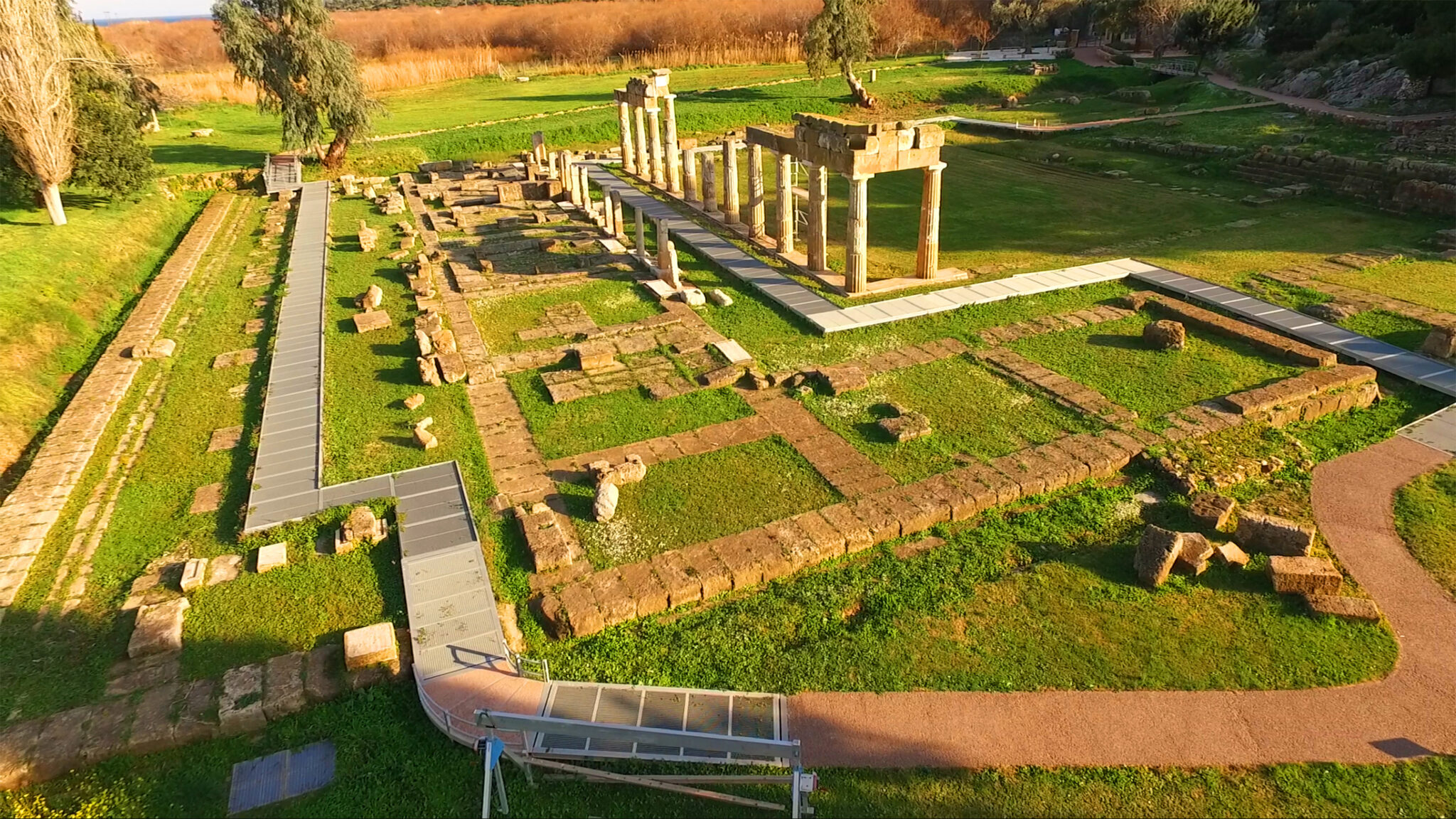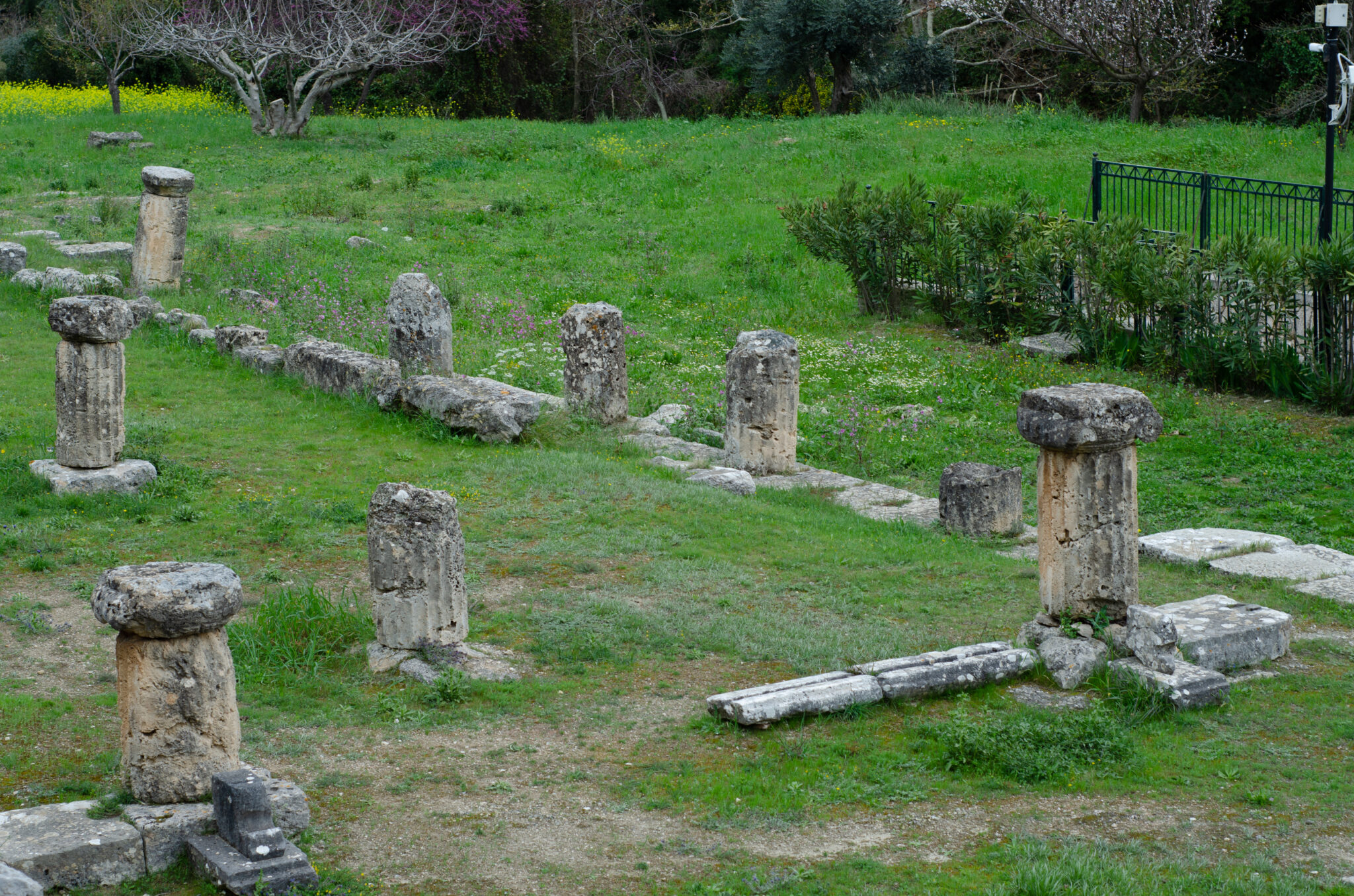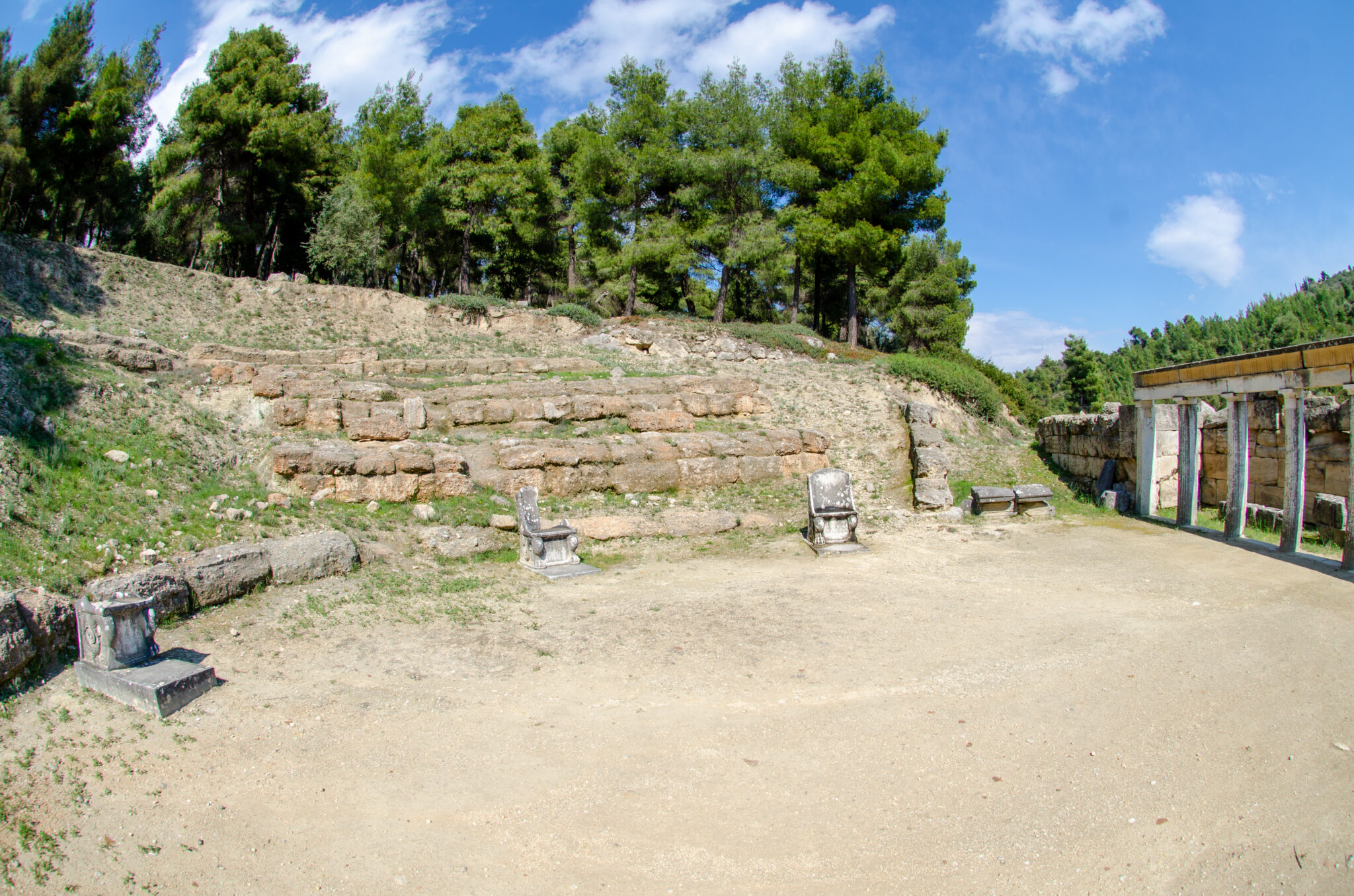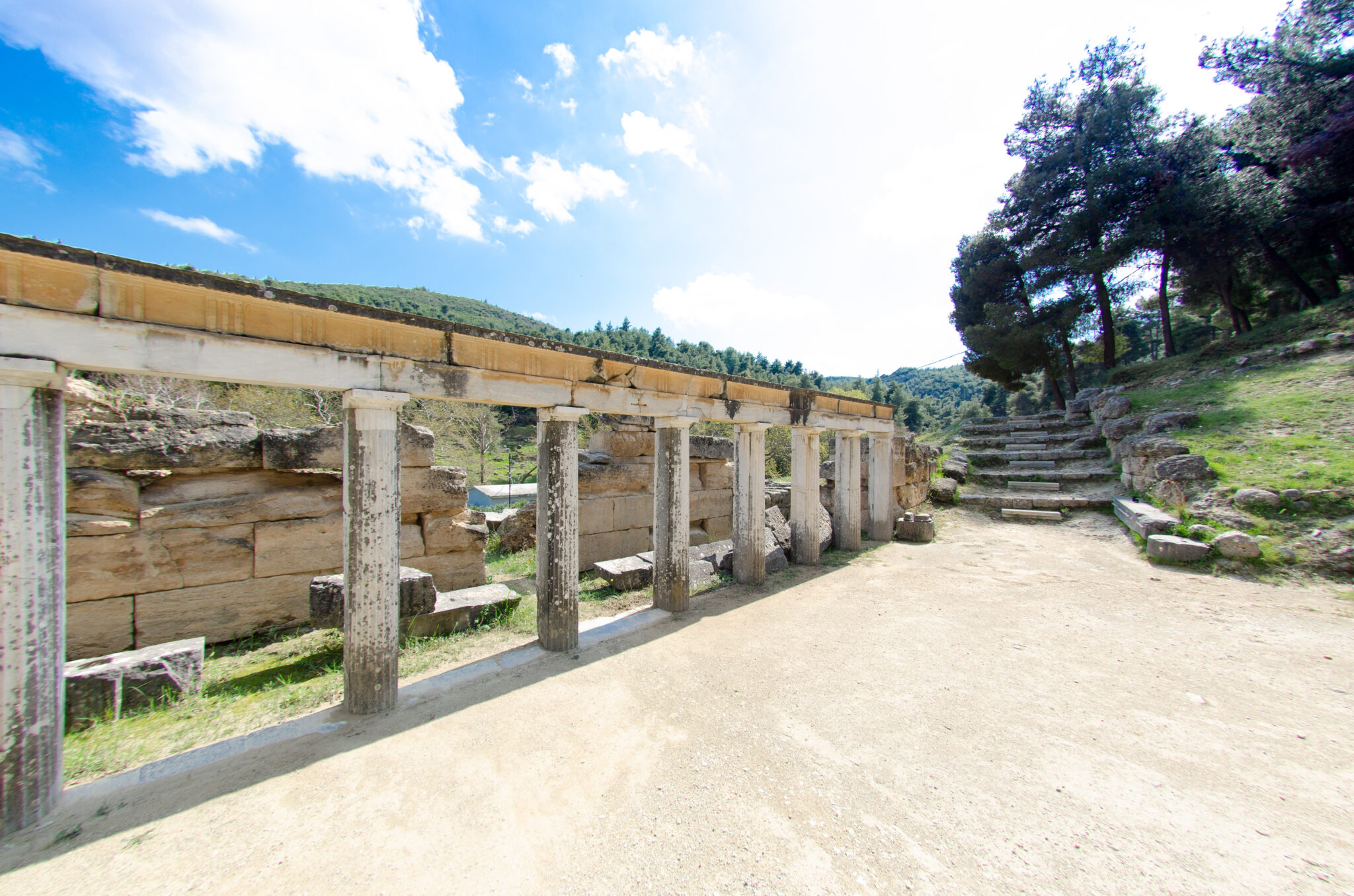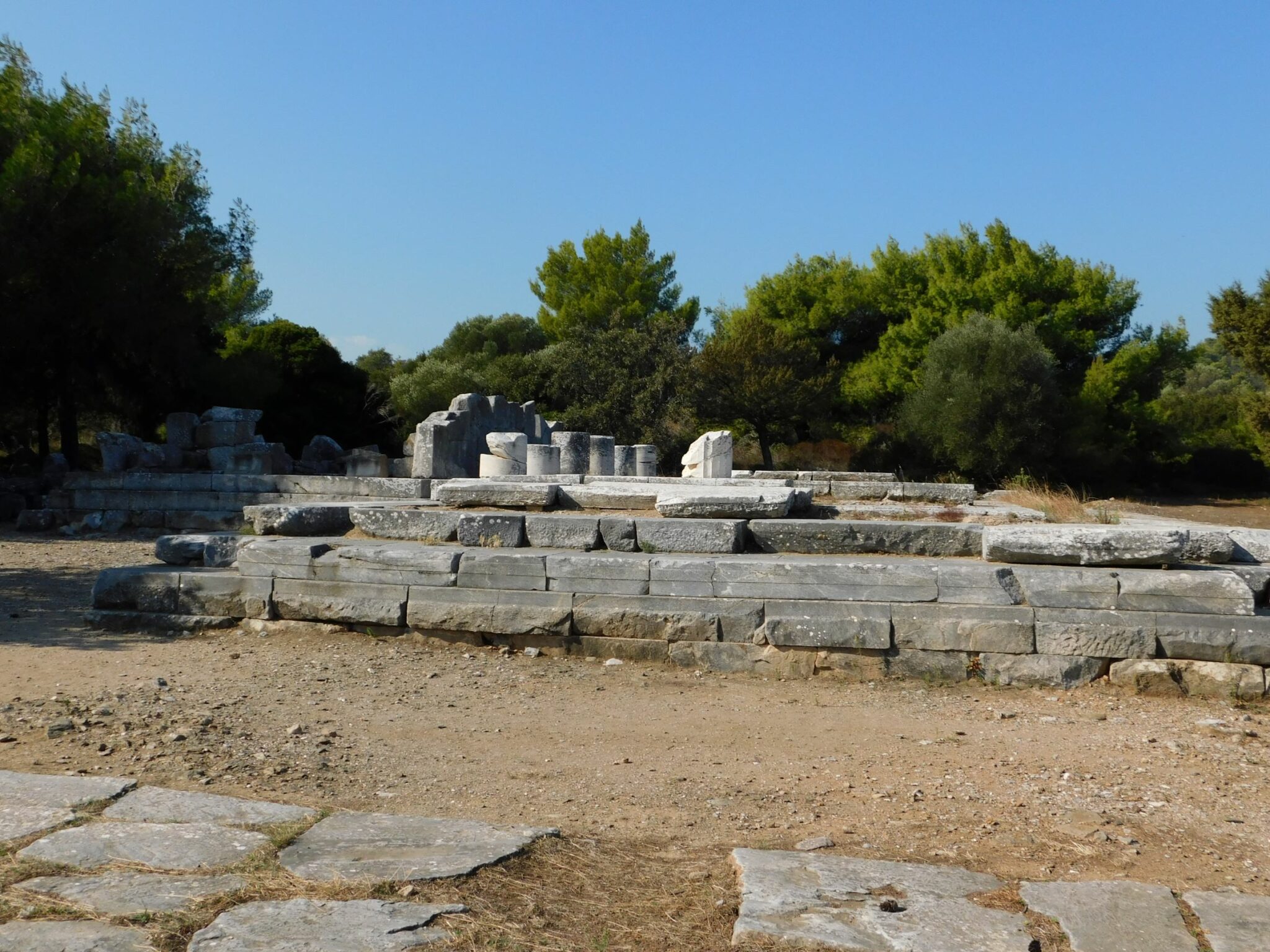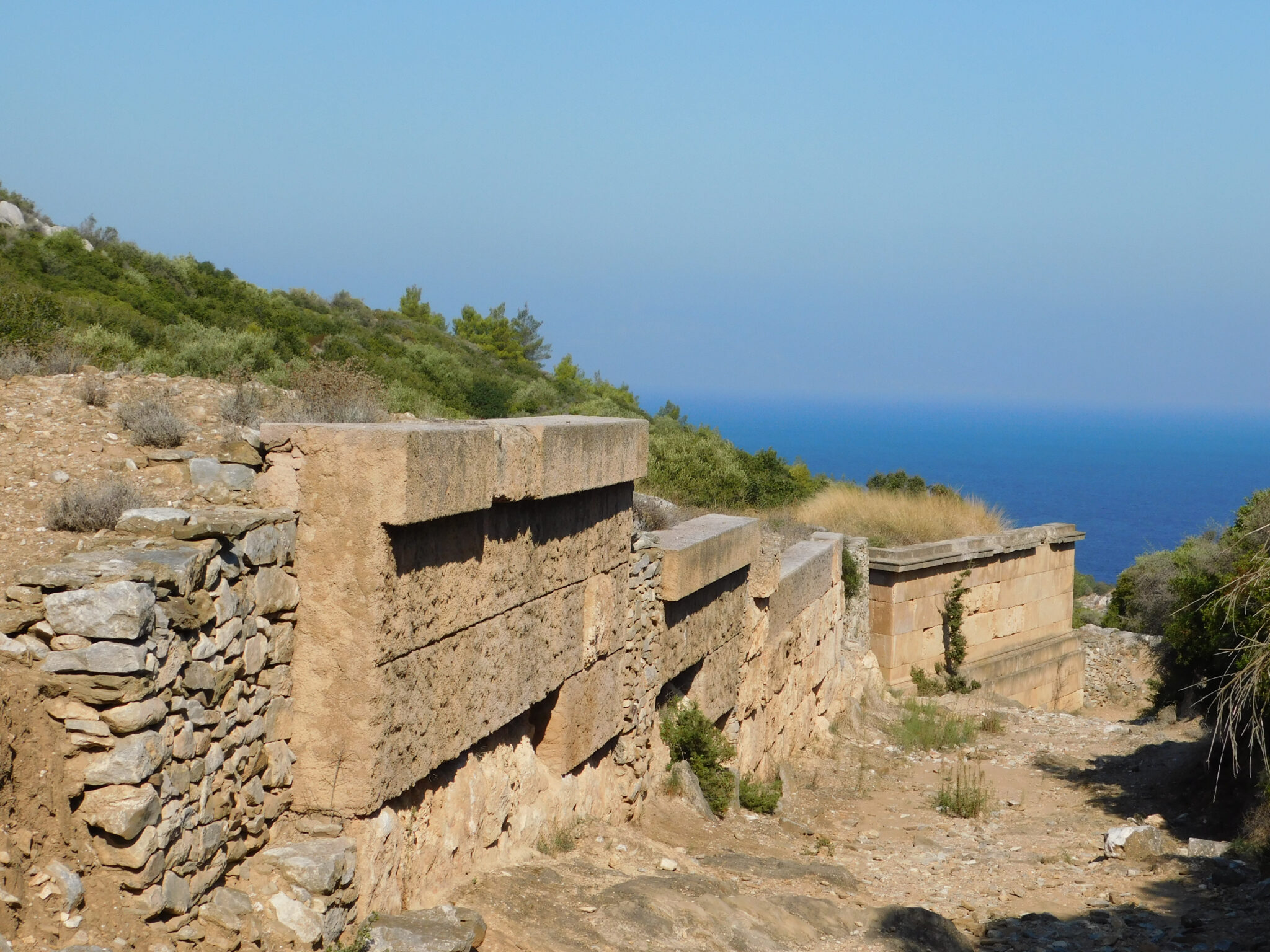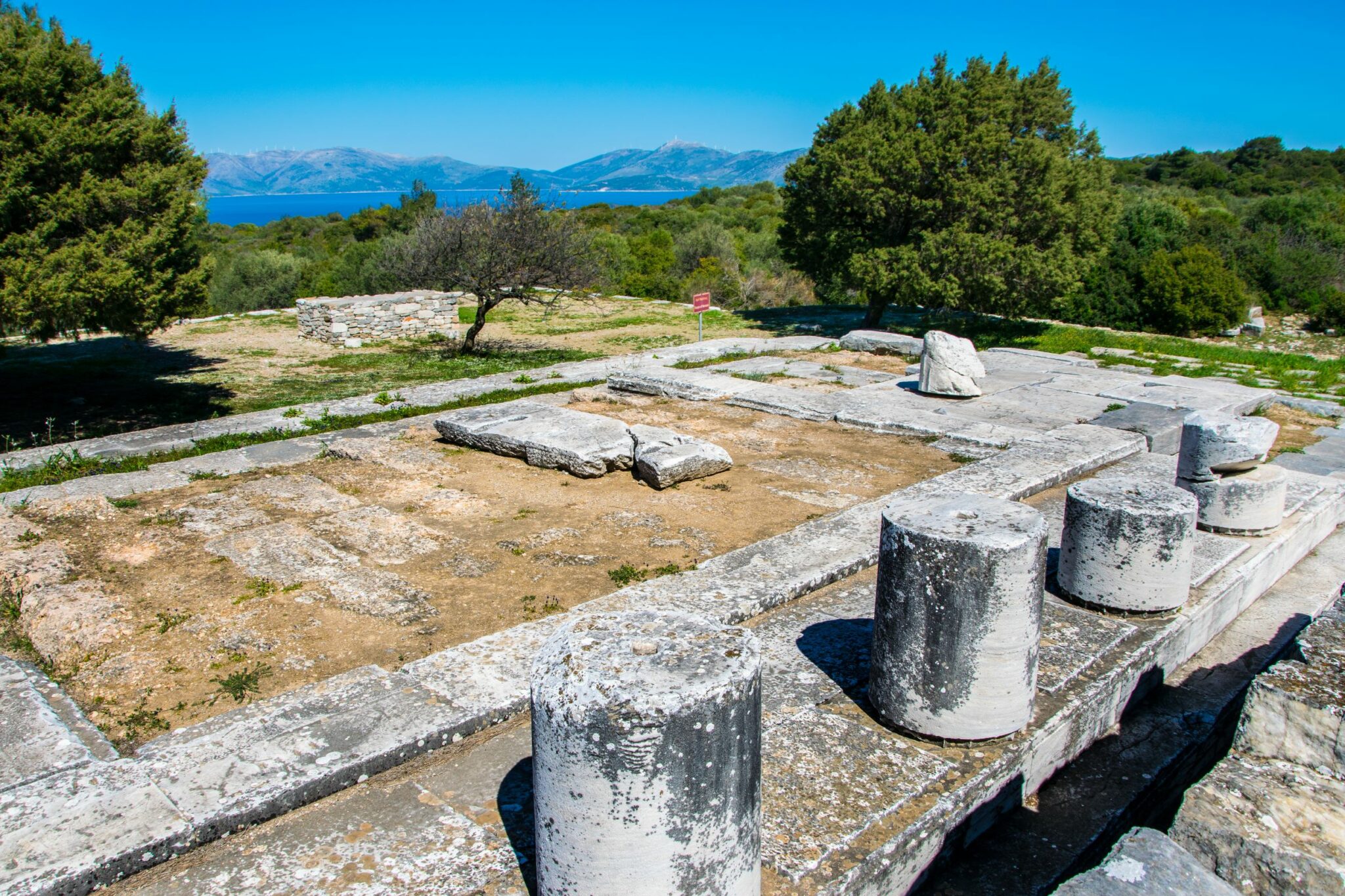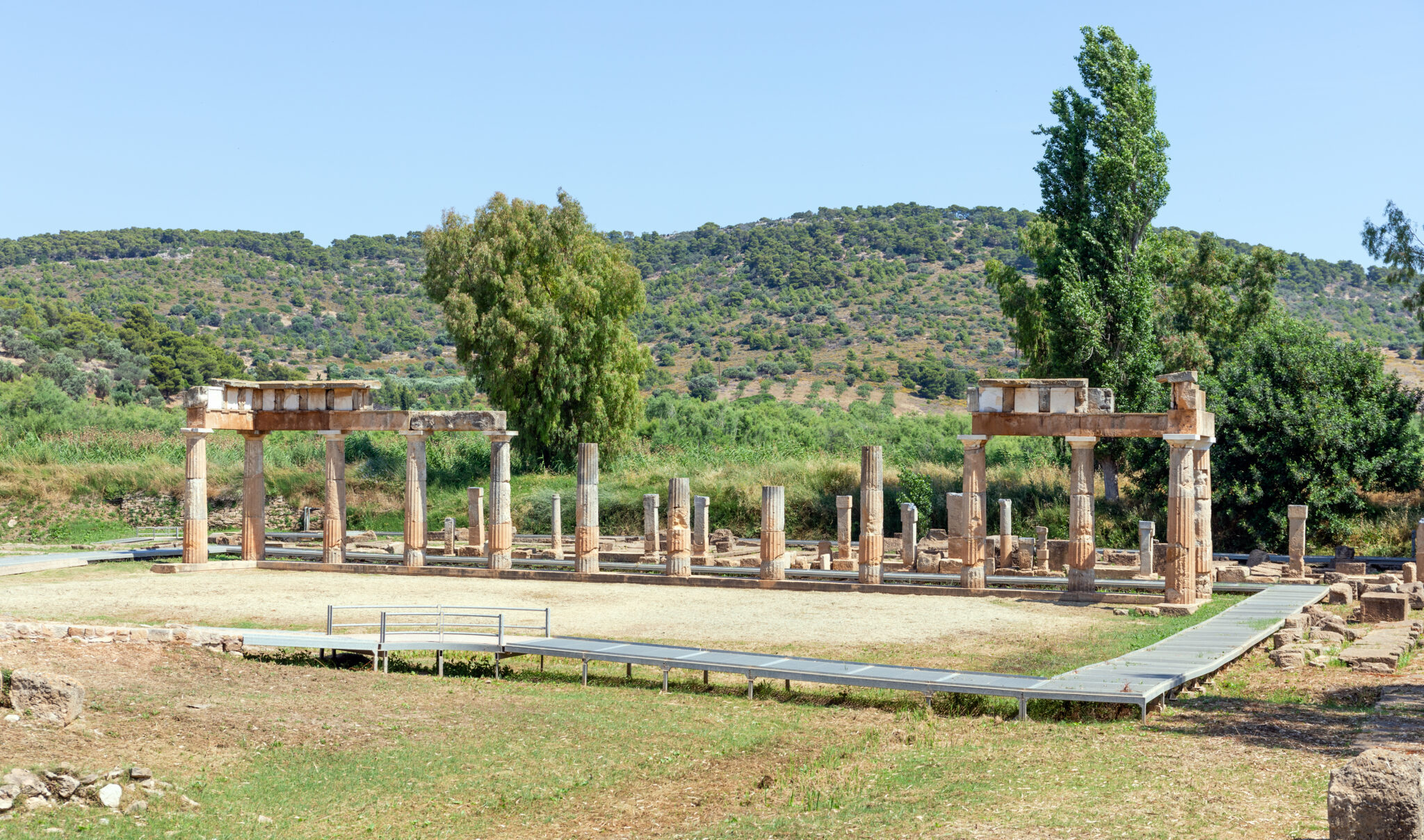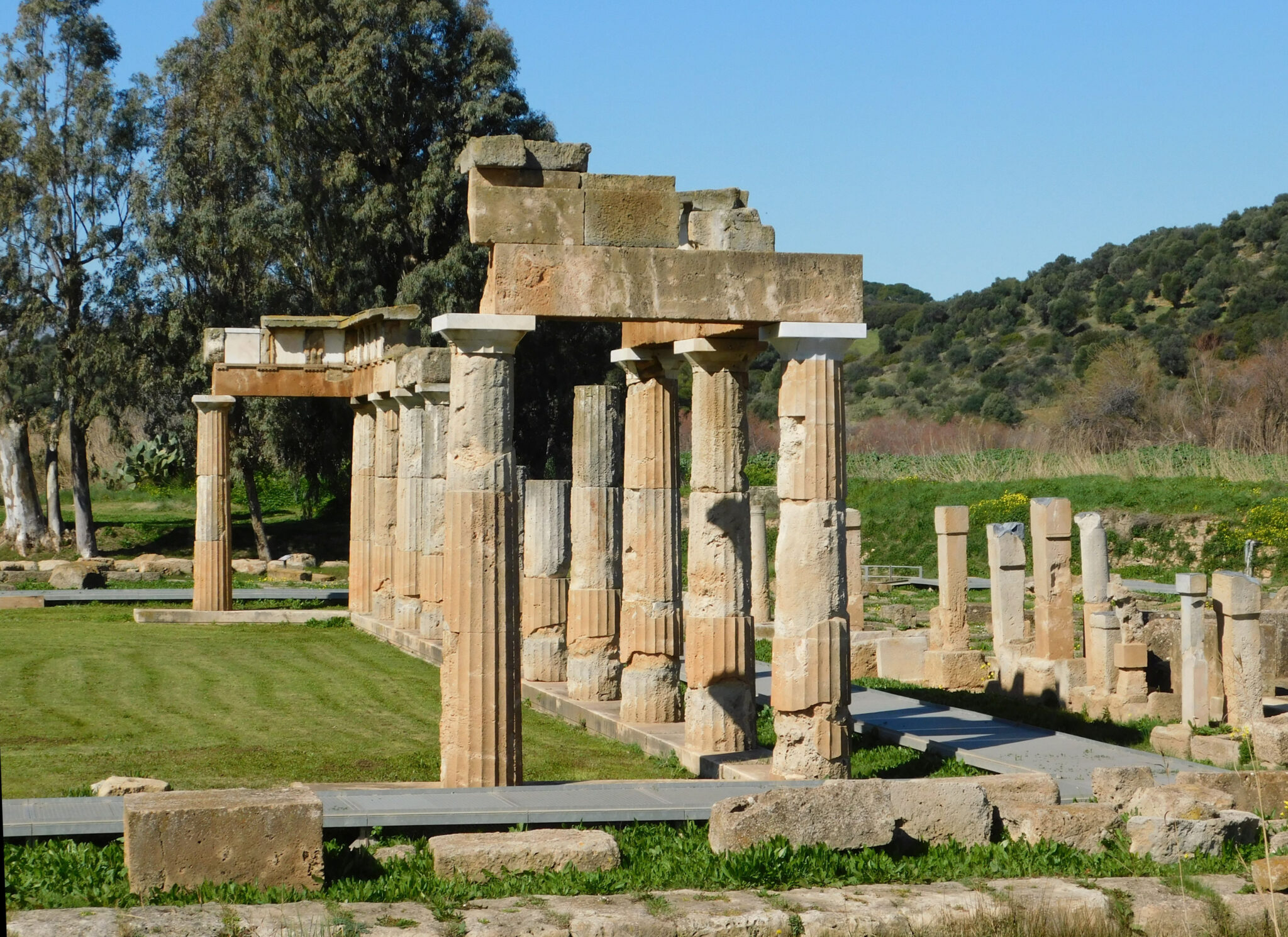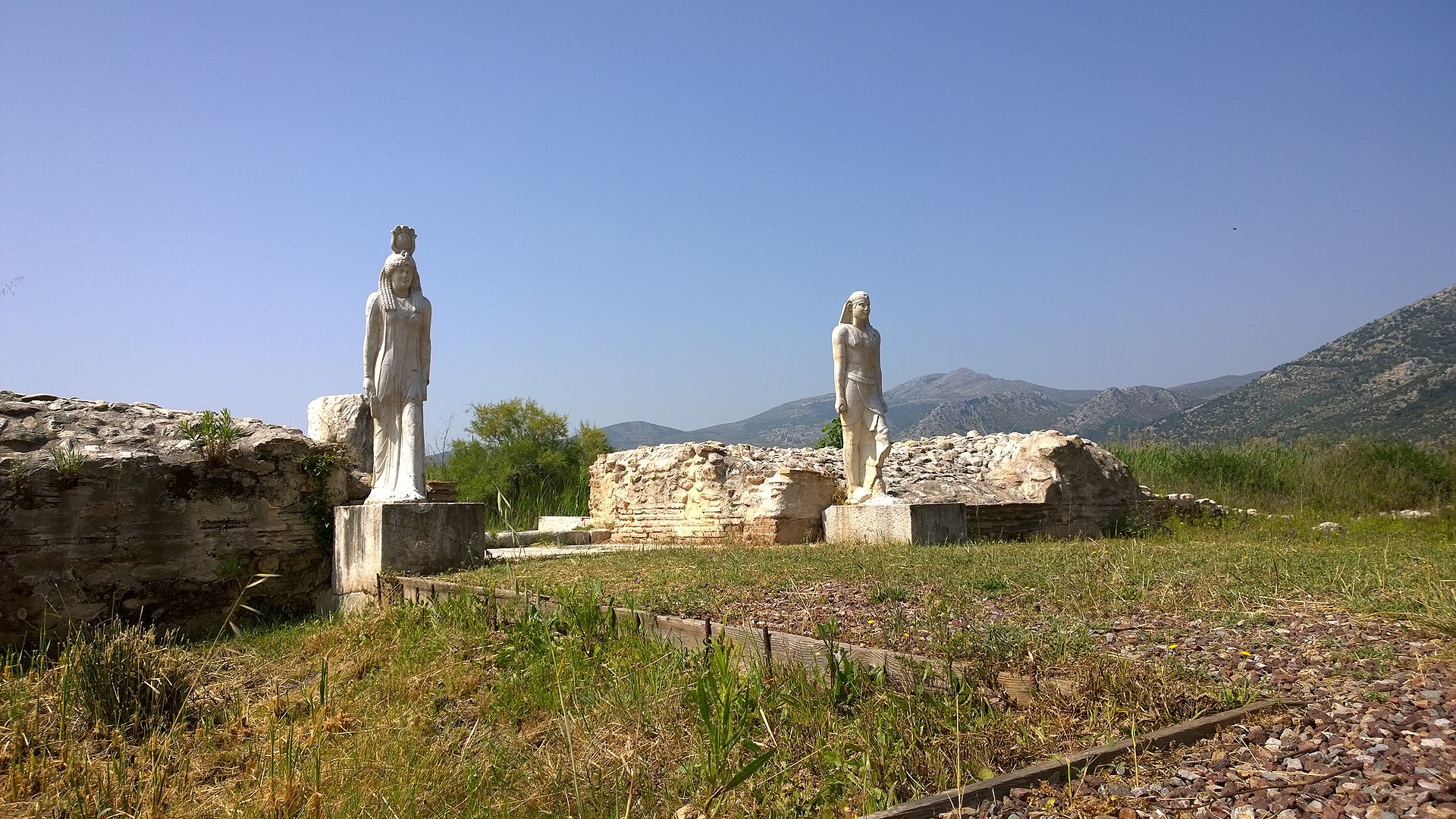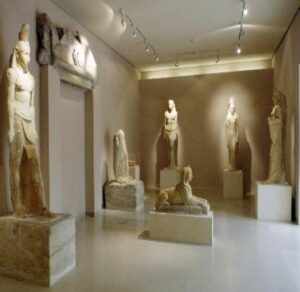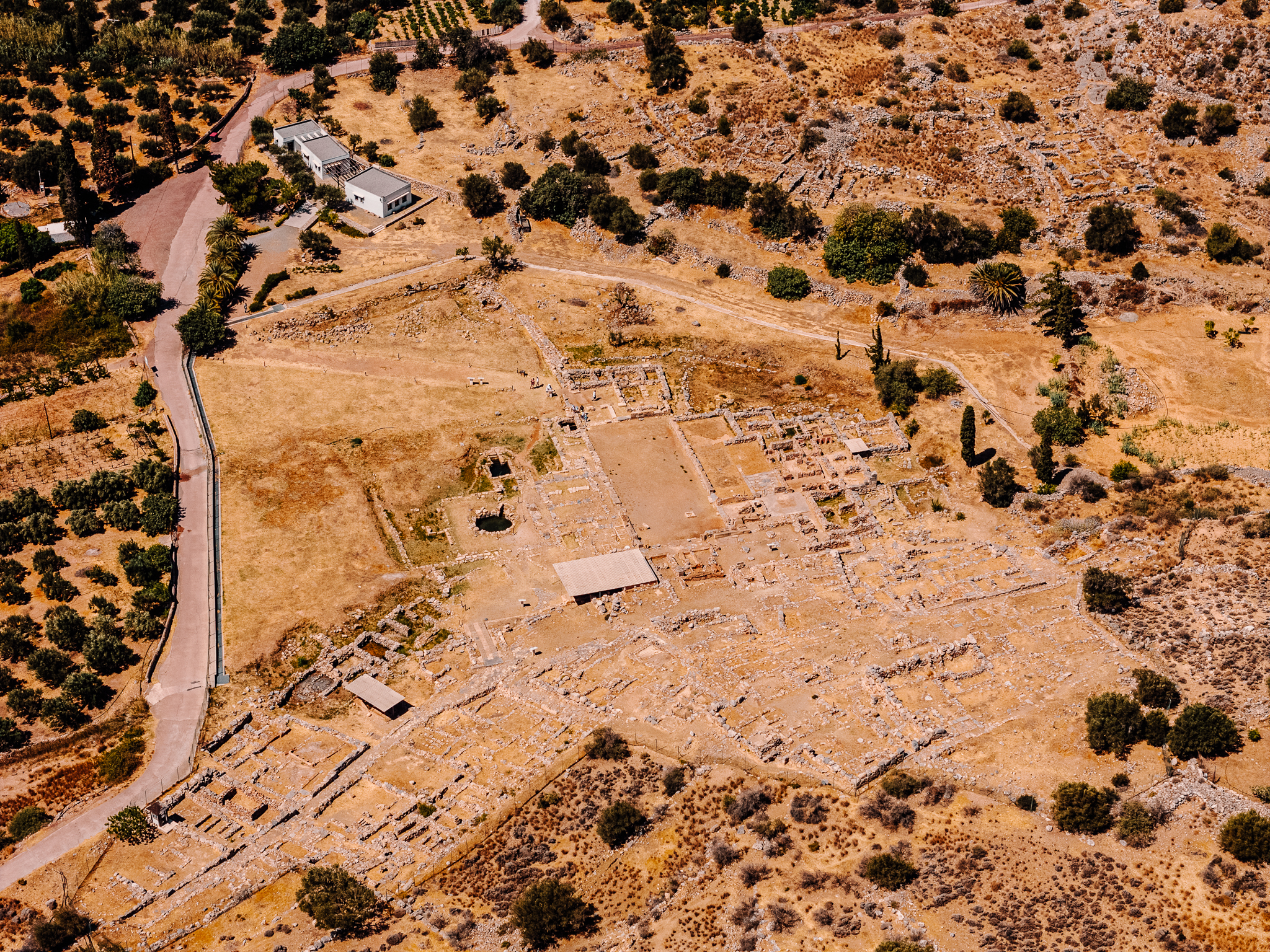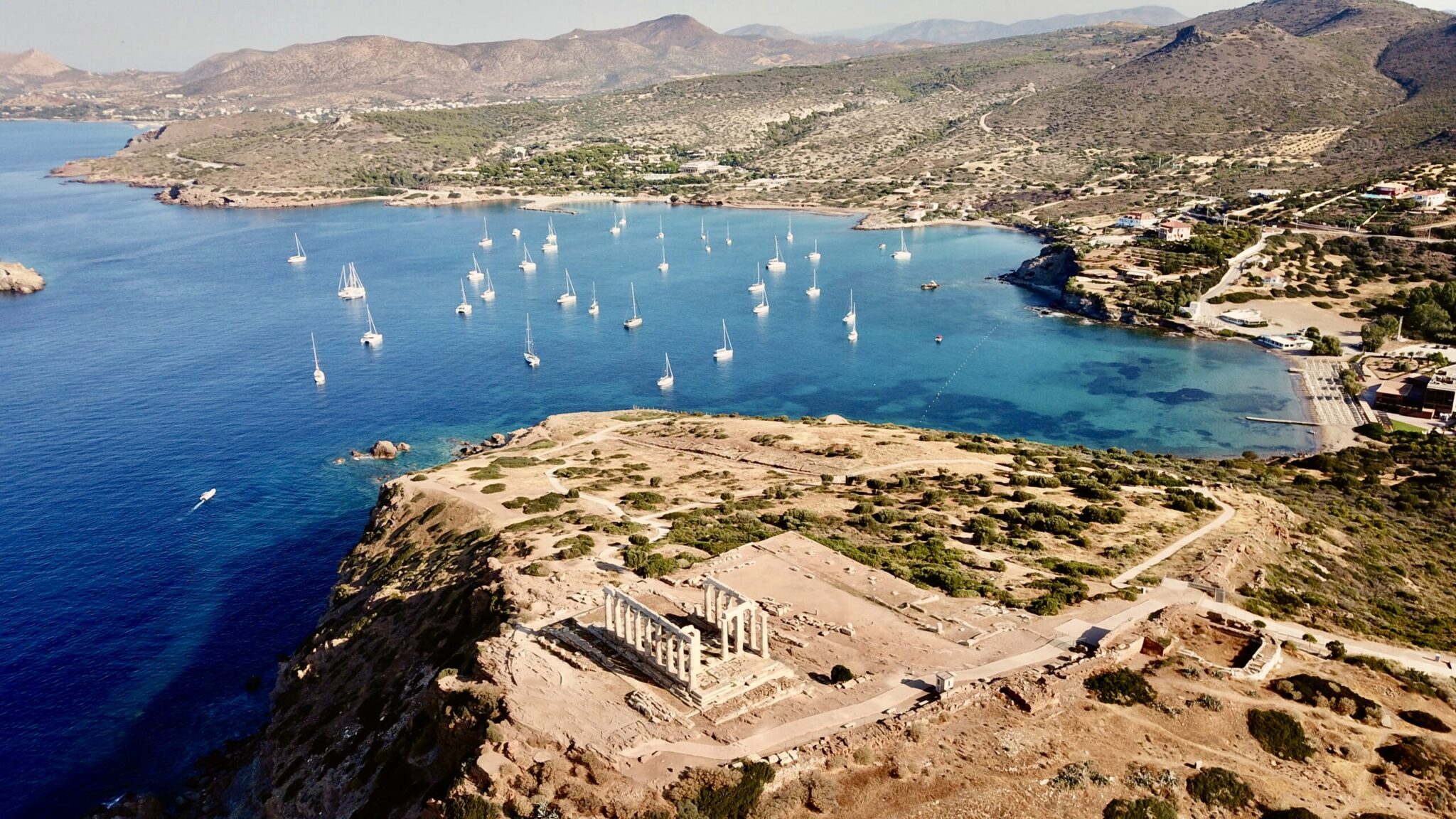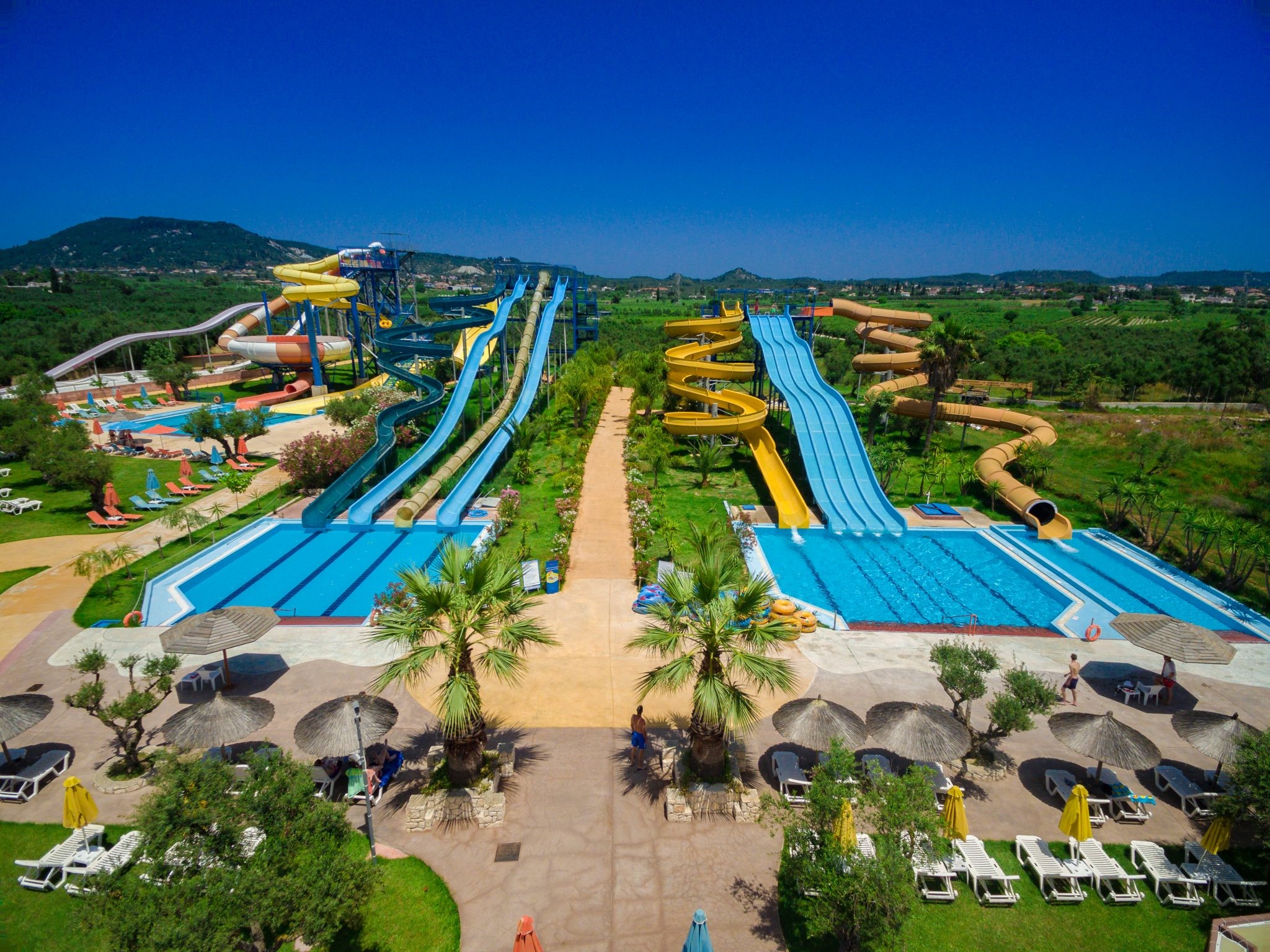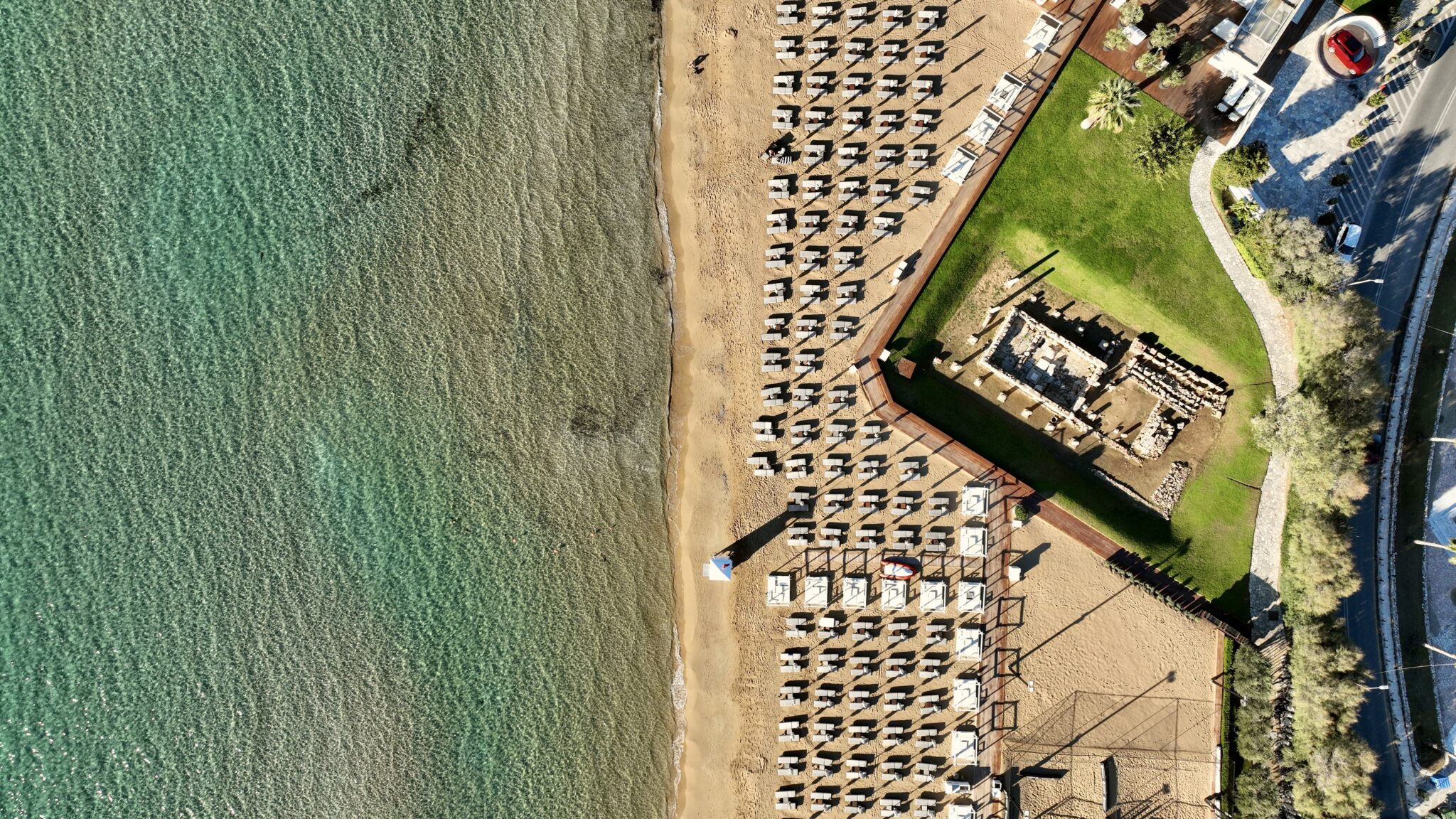Very close to Athens and the Acropolis, many important findings and fewer visitors; the archaeological sites of eastern Attica are right here waiting to be discovered. Within less than an hour from Athens, you can really get a glimpse of what life in ancient Greece was like, while enjoying nature. Therefore, it is well worth taking a day to visit one or more of the following archaeological sites.
Amphiareio archaeological site, Oropos
Located about 45 km from Athens, on the way to Kalamos, the archaeological site is of Amphiareio is not visible from the road. The only sign of its presence could be said to be a fence on the right side of the road. But if you stop and take a look from above, you’ll see a green pine-clad little valley.
Located on the banks of a stream, since the end of the 5th century BC, Amphiareio used to be an oracle. Interestingly, it was not dedicated to any of the Twelve Olympians but to Amphiaraos. The latter was a Greek mythological hero who participated – by deception and without meaning to – in the attack on Thebes (described in detail in Aeschylus’ “Seven against Thebes”). According to myth, Zeus raised a thunderbolt, opening a ravine that swallowed Amphiaraοs and his chariot up completely, sparing him from death and making him immortal. Amphiaraos, a subterrean god and seer, was also worshipped as a physician and was thought to be the “Second Asclepius”. That is why his sanctuary in Oropos, apart from being an oracle, also featured a sanatorium.
The temple of Amphiaraos was built when the area of Oropos was under the rule of the Athenians. The archaeological excavation of the site took place between 1884 and 1929 and revealed the columns of the six-column Doric temple, most of which was not found. It seems to have been swept away by the torrent in the past. Particularly impressive is the great stoa (in Greek architecture, a freestanding colonnade or covered walkway), 110 metres long and about 11 metres wide, featuring a total of 39 Doric columns. Many visitors slept and rested there, as Amphiareio was one of the centres of religious and medical tourism in antiquity.
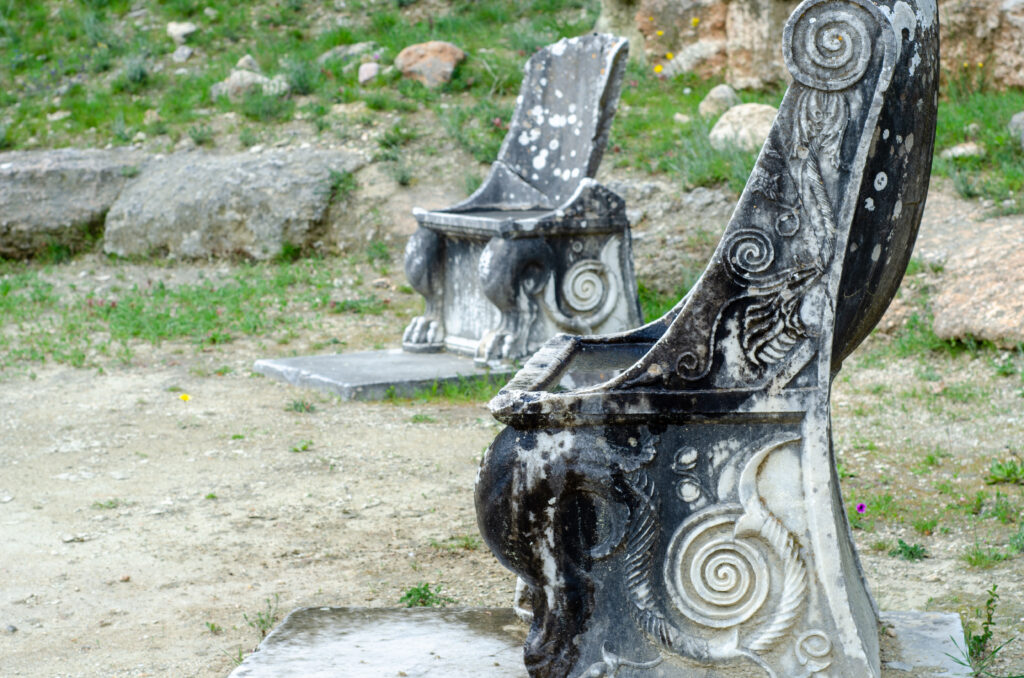
The site also boasts a very well-preserved stone theatre with wooden seats and a seating capacity of 300, which was built much later, namely in the 2nd BC century. Today the ruins are very much in tune with nature, creating a unique and delightful environment which makes it worth spending a whole morning here.
While you are here, go swimming at the beach of Oropos or Kalamos. In Oropos you will also find many good restaurants to satiate your hunger.
Opening hours of the archaeological site: daily 8:30-15:30.
Ramnous archaeological site
One of the best preserved and, at the same time, isolated archaeological sites.
Even in terms of vegetation, the area remains almost unchanged since antiquity, as it has not been inhabited since then and has retained its rural and pastoral character.
The remains of the ancient settlement of Ramnous, as well as walls and remains of fortifications and a Doric temple dedicated to Nemesis, built in the early 6th century BC, lie in the valley of Limikos, overlooking the Gulf of Euboea. In ancient times, the area was of great strategic importance for the Athenians. From this fortress they ensured free navigation on the Euboean Sea and transported grain to Athens.
As mentioned, since the area has never had any new residential development, some of the ancient ruins have always been visible. The first excavations took place at the beginning of the 19th century. The temple and the fortress were discovered in excavations carried out between 1880 and 1892. In the last decade, the site was largely abandoned and not fully accessible to visitors. Now, however, it is.
Take a lovely 1.5 km walk inside the ancient settlement until you reach the fortress that combines magnificent views with rich archaeological findings, including tombs and thrones.
While you are here, as long as it is still warm, go swimming at the beach of Schinias or Grammatiko. You can also visit Lake Marathon for hiking and other outdoor activities.
Opening hours of the archaeological site: daily 8:30-15:30, except Tuesdays. Last entry to the fortress: 14:00.
The temple of Artemis and the Archaeological Museum of Brauron
Located 35 km from the centre of Athens, less than an hour by car, Brauron is known for the temple of Artemis that gives its name to the current municipality, as “Artemida” is the official name of Loutsa.
According to myth, goddess Artemis asked for the sacrifice of Iphigenia, Agamemnon’s daughter, so that the Achaean fleet could sail to Troy. Eventually Artemis saved Iphigenia, who then became a priestess of the goddess in the region of Brauron. The temple of Artemis was built in the 5th century BC and is of Doric style. The main excavations in the area took place in the 1950s and 1960s. Although a large part of the temple has not been preserved, the layout of the space exudes the magnificent atmosphere of the past. This is due to the fact that the Stoa, a Doric building in the shape of an asymmetrical Greek “Π” (letter P in Greek), which surrounds the area, has been well-preserved. Be sure to visit the museum. Although small, it is one of the most important archaeological museums in Greece, with findings of great value, among which the numerous statues of little boys and girls stand out. Apart from being the goddess of hunting, Artemis was also the goddess of childbirth and children.
Crossed by the stream of Erassinos, the area’s natural environment is equally impressive. The stream has created a special wetland, where reeds, tamarisks, vineyards and vegetable patches coexist harmoniously. Numerous reptiles and amphibians, as well as a large number of bird species also live in the area.
While you are here, go swimming at the beautiful Hamolia beach or go for a stroll and a bite in the picturesque coastal town of Porto Rafti.
Opening hours of the archaeological site: daily 08:30- 15:30, except Tuesdays.
Sanctuary of the Egyptian Gods, Nea Makri (Brexiza)
Indeed, in Attica there is a temple dedicated to the gods of Ancient Egypt. Specifically, the temple is located in the locality of Mikro Elos (Small Marsh) of Brexiza in Nea Makri. Built by Herodes Atticus –one of the richest men of his time and a prominent landowner-, the temple was of square shape, 50 by 50 metres. The most impressive part of the temple must have been the supernaturally large statues that stood inside (some of which can now be found in the Archaeological Museum of Marathon).
In the area where the temple was located, replicas of the statues of the goddess Isis and the god Osiris have been erected. From the size of the replicas one can understand the size of the temple and its imposing presence in the area. It seems that when the sanctuary was founded, it was located on a small island in the marsh which was connected to the mainland by canals. Today the site is filled with reeds that add to the “Egyptian” feel of the landscape.
While you are here, go swimming at the beach of Nea Makri or visit the Archaeological Museum of Marathon.
Opening hours of the archaeological site: daily 08:30- 15:30, except Tuesdays.



